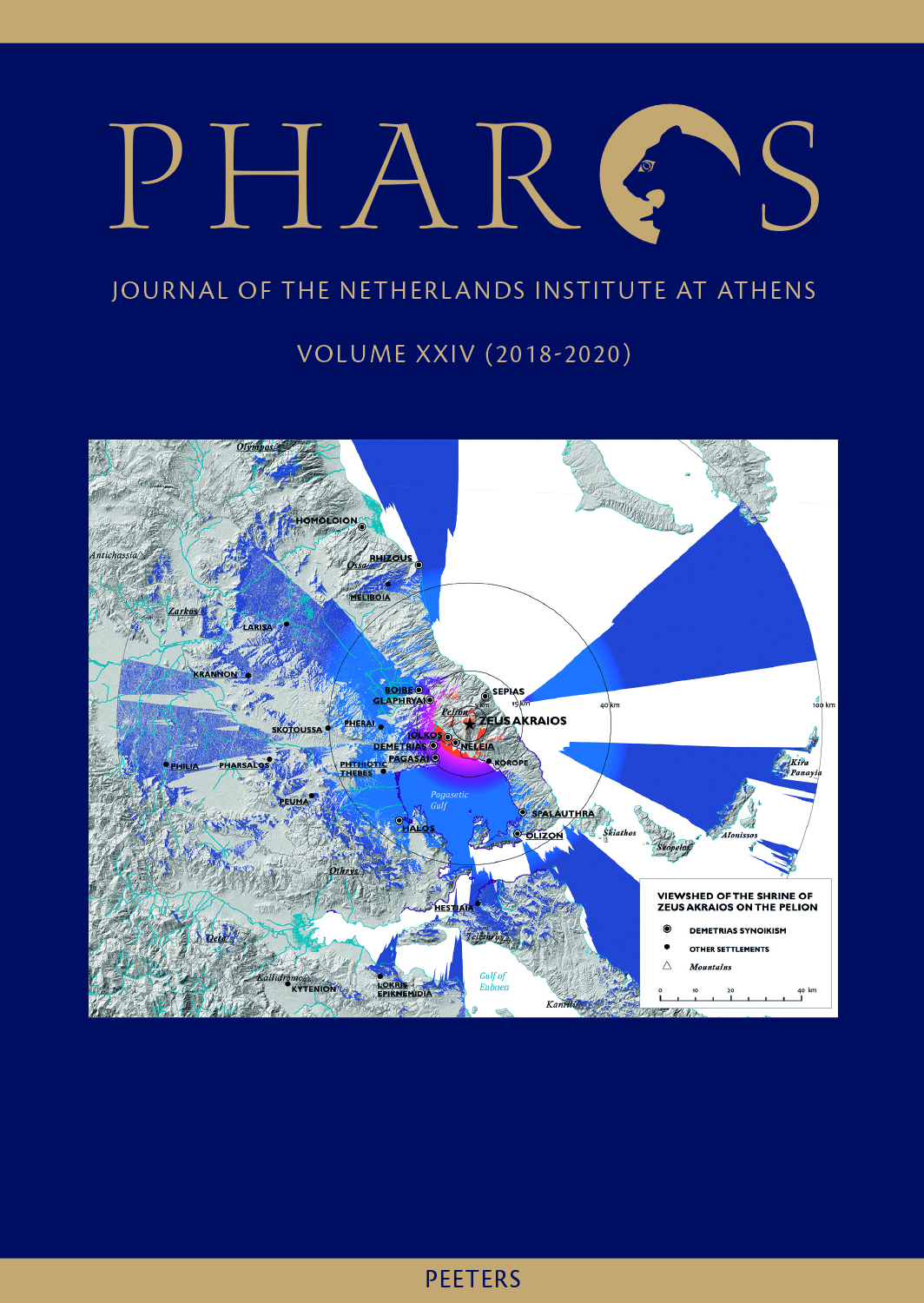 previous article in this issue previous article in this issue | next article in this issue  |

Preview first page |
Document Details : Title: The Plakari Archaeological Project Subtitle: Preliminary Report on the Fifth Field Season (2014) Author(s): CRIELAARD, Jan Paul , BOHNCKE, Sjoerd , CHARALAMBIDOU, Xenia , CHIDIROGLOU, Maria , KLUIVING, Sjoerd , KOSMA, Maria , LENTJES, Daphne , SONGU, Filiz , TROELSTRA, Simon Journal: Pharos Volume: 22 Issue: 2 Date: 2016 Pages: 17-41 DOI: 10.2143/PHA.22.2.3285486 Abstract : The 2014 fieldwork campaign at Karystos-Plakari in southern Euboia included excavations on Terrace 1, where during the 4th century BC a large open space was created with the help of enormous deposits of stones, probably as part of a major reorganisation of the sanctuary and probably to accommodate relatively large groups of people. Excavations on the north-east side of the hill brought to light part of a Final Neolithic (FN) structure sitting on a terrace that was retained by a large wall. Associated finds include a variety of ground and chipped stone tools and FN ceramics, including a large, nearly complete coarse ware jar found standing upside down in the earth. Sedimentological and palaeoecological fieldwork in the Rigias estuary provided further insights into landscape changes and landscape formation processes in the dynamic coastal area close to Plakari. Analysis of archaeobotanical macro-remains and charcoal samples collected between 2011 and 2014 from Early Iron Age to Classical contexts at Plakari, suggest that during the 1st millennium BC land use around the settlement was characterised by the typical Mediterranean polyculture system as well as by oak forests that must have existed in the close vicinity. The conservation and restoration of bronze finds, finally, brought to light a figuratively decorated Boeotian fibula and an ‘Argive’ shield band that had previously gone unnoticed. |
 |


